
When students in the Cooper Union’s School of Art arrive for their freshman year, they know that at the end of their time in the program, four years later, they will present a senior show. This exhibition serves as a capstone to their time at Cooper and an opportunity to announce a first version of their artistic voice to the larger world. Students follow different models, from the mini-retrospective to an exhibition of brand-new work; sometimes the work shown emerges from a specific course, while in other cases it has never been seen by a faculty member. Adding to the poignancy of this year’s run of senior shows was the fact that these students are the last to graduate from the School of Art without paying tuition, having entered Cooper as an institution that prided itself on and drew much of its sense of self from free education. The absence of tuition was perhaps the most widely known fact about the Cooper Union for the Advancement of Science and Art—the institution founded by philanthropist Peter Cooper in 1859 as a school for applied sciences and architectural drawing—until 2013. That year, its trustees voted to end the century-and-a-half-long policy of free tuition in order to offset the losses to the endowment caused by the construction of a new building by architect Thom Mayne, among other factors.
The new building, 41 Cooper Square, is striking. In its basement is an exhibition space that students can use for their senior shows and other exhibitions (some students organize solo or group shows earlier in their time at Cooper, an opportunity not required but made available to them). As one student told me, “The only good thing to come out of that terrible building” that stripped Cooper of its signature largesse was this gallery. Spacious and airy, and semi-visible from the street, it more closely resembles the white cube spaces in which graduates, going forward, are likely to exhibit their art. Seniors are assigned a date for their show, but can choose their own space from an array of lobbies and hallways in Cooper’s Foundation Building, the iconic brownstone structure from 1859 that anchors Cooper Square and houses the Great Hall, in which Abraham Lincoln famously spoke.
Tuition remains a sensitive topic at Cooper, these days not so much as a subject of debate but as a bad memory. The question unanswered is when, not if, the school returns to the old model. (The Cooper Union endowment consists primarily of revenue in rents from the Chrysler Building, since Peter Cooper’s family left the school the land the skyscraper was built on. That revenue is expected to triple in 2018 and then remain flat for a decade, but the trustees argued that a lack of liquid assets necessitated a new tuition policy.) Mike Essl, the current acting dean of the School of Art and a graduate of Cooper who joined the faculty following a successful career in graphic design in the 1990s at the height of the internet boom, choked up during our conversation as he considered the fact that he would not have been able to attend Cooper had tuition been charged at that time. Indeed, part of what has historically drawn students to the School of Art was the ability to go to art school for free, since (as much in the 1970s and 1990s as today) many parents refuse to pay for art school, and others are unable to fund college education at all. Essl and a team of other faculty members, alumni, and admitted students formed the Committee to Save Cooper Union and sued Cooper’s trustees in the wake of the 2013 decision. After the school settled with the State of New York and agreed to pursue a plan to return to a tuition-free model (which current estimates say will happen by 2039), he returned from sabbatical.
Day Gleeson, an artist, full-time faculty member since 1985, and longtime head of the admissions committee for prospective art students, becomes similarly impassioned when the topic comes up. Charging tuition “was an anathema to me after doing this for twenty-five years,” she says. I was surprised to find that even these official representatives of a small but influential institution were not hesitant to speak up, loudly, about their disgust for the previous administration under Jamshed Bharucha and the dismay they continue to feel over the charging of tuition—even though, as Gleeson pointed out to me, students still receive half off tuition and many are provided Pell Grants. As Gleeson stressed, despite the now temporary imposition of tuition, the student body remains unusually diverse and the school remarkably affordable—no other art school could be attended for twenty thousand dollars per year. Of course, this does not mean she is in favor of tuition; rather, it simply makes the temporary fact of tuition bearable.
Essl has an image of the Foundation Building tattooed on his chest; the future of the school is important to him and to the countless alums whose lives it transformed. Would all those alums have gone on to do all those amazing things had they not benefited from the generosity (and the example of good will and societal concern it expresses) of a tuition-free model no longer in place? A sense of exhaustion has set in, but refuses to settle into resignation. On the door to an office off one of the Foundation Building’s lobbies, a once regularly updated ticker on a poster counting the number of days “since a majority of the following members of the board of trustees hijacked the mission of the Cooper Union” now bears a Post-it that states: “many.” During a tour of the school, I stumbled across a class, co-taught by artist and associate professor Walid Raad and recent alums Victoria Sobel and Casey Gollan—two organizers of the Free Cooper Union movement—in the process of setting up their final project. The topic of the course Sobel and Gollan returned to co-teach? Free education.
I mention all of this not to dwell on a mostly resolved scandal, but to emphasize just how shocking this betrayal—for it was felt as a betrayal of the institution’s values—was to those who are committed to a certain munificent ethos inherent to Cooper Union. The ideal of free tuition constitutes part, not all, of this ethos, says Cooper Union president Laura Sparks, who is “committed to returning Cooper Union to free tuition as soon as possible.” However, she notes that the school “always has been, and always will be, about more than free tuition. Cooper Union is also about providing a high-quality education, making education accessible to the working class and other under-served groups, fostering curiosity, invention and expression, and serving as a hub of civic discourse.” The Cooper spirit seems to be a set of values partly passed on by people, like Essl, who studied at Cooper and then returned to teach. Last year, a job search by the School of Art added three new faculty members: Leslie Hewitt, Lucy Raven, and William Villalongo—two of them, Hewitt and Villalongo, are alumni. But the faculty’s educational backgrounds vary; as Gleeson notes, too much inbreeding would be a disservice to students, but on the other hand, having some alums around can keep the school on track and in touch with its ongoing mission. And, of course, graduate school does intervene, with many graduates going on to master’s programs, of which Yale and Rutgers are frequent choices.
Sparks links the continuity of the Cooper ethos to Peter Cooper, noting that he was “a serial inventor, a man of many talents, and firmly committed to principles of social justice and access to all students, regardless of wealth, race, religion or gender.” But it is important to her that the institution evolve from his ideals, not ossify in service to them. “Today,” she says, “our students continue to be makers; whether they are enrolled in art, architecture, or engineering, they are engineering solutions. They are creating new works, challenging conventional wisdom, and engaging in the city and the world around them. They know and appreciate our history for bringing people together on our campus in the Great Hall to discuss the issues of the day, to engage, and to act. They are organizers, advocates, and activists working toward a better and more just world.” The emphasis on engagement and action recalls the work of Hans Haacke, the artist who taught at Cooper from 1967 to 2002 and whose legacy informs the School of Art’s pedagogical aims to instill in students a critical, engaged, and reflective practice.
As befits an unusual institution, Cooper’s admissions process is unique: in addition to a standard portfolio, each applicant must submit a group of works produced in response to six prompts. The specifics of this “home test” are determined anew each year by the faculty, though some broad themes are constant: design (for example, “design a covering for a public monument that redefines or transforms the meaning,” or “design a lie”), composition, space, seriality, self-portraiture, and finally, in the prompt that gives prospective students the most latitude, a question consisting simply of a single word: “desire,” for example, or “oppression.” As Essl told me, the questions range “from intentionally vague to incredibly specific”; he particularly remembers one response to the one-word prompt, which that year had been “surveillance”: an applicant simply submitted his wallet, complete with ID and credit cards.
After receiving applications—this year there were around nine hundred for sixty-five spots—each test is examined by three faculty members from different disciplines, who assemble a class over the course of five weeks. Gleeson says that they think of it as a class—they want people who will learn from each other—though they “don’t look for a profile.” Certain schools do get a lot of students into Cooper—the magnet art high schools of New York City and Miami, for example—but, collectively, the population is diverse. The admissions committee has found over the years that even without taking money or background or gender into consideration during the evaluation process, the class has typically been evenly split along gender lines, and no more than around half of the students are white, with thirty percent or so hailing from New York State. Sometimes children of famous or infamous artists, Gleeson tells me, sit in the classroom next to the children of people who fled the Contras. According to Essl, in admissions committee meetings, “We don’t talk about money in those moments, we just talk about the quality of the application. It has a purity that I admire.” And because only faculty is involved with admissions, “this is the only school where the faculty are looking forward to teaching you,” Gleeson says, “because they’ve picked you, they want you here, they want to see what you make, they want to hear what you have to say. In this era of the corporatization of acceptance, that’s a huge draw.” This year, of the admitted students, only one declined.
If there is a Cooper ethos to which one can point, is there, then, also a Cooper “look,” some set of aesthetic conventions or approaches to art-making that govern the School of Art? Is there anything standardized or academicized about artistic practice as it is taught there? Gleeson is quick to correct me when I call the school’s approach “conceptual”: if the work were purely conceptual, she says, why not just write a book? At Cooper, the material and conceptual cannot be divorced. In her classes, she emphasizes the haptic, and focuses on getting students “away from their phones” and engaged with process. Everyone, she observes, has their own process, and by observing the processes of one’s peers one can grow in one’s own way of working and making. Still, something like Hewitt’s or Raad’s blends of imagery, conceptual heft, and deft use of materiality seemed present in a good portion of, though certainly not all, of the senior shows this spring.
Visiting the many shops that students use is exciting: a suite of rooms devoted to computers for video editing and photography (both digital and analogue) were busy with activity when I visited, as were spaces for lithography and screen printing (looking at the ancient-looking printing press, right next to a window looking onto the futuristic surrounding buildings on the Bowery, was surreal). Cooper also boasts a fully functioning letterpress facility. These shops, the beating heart of the school, are staffed by practicing artists, who can thus engage students in broader artistic dialogues even as they convey technical knowledge by request (at Cooper students need to actively seek out such know-how; it is not required of them). In Art Subjects, his history of American art schools, Howard Singerman suggests that craft skills generally get conveyed in undergraduate programs, and conceptualism exclusively in graduate programs, which eschew craft. At Cooper, however, this formula is undermined, since craft and concept are intertwined; the model is closer to what Singerman describes as an ideal developed in the Bauhaus of “the artist as an independent researcher in materials, perception, and the visual history of art practice.” The tactile yet still contemplative space of the shops are one site at Cooper in which this model proliferates.
The Foundation Building can feel sort of like a Victorian clubhouse plopped in the middle of New York City, what with all the smokers huddled outside (holdouts for nicotine!) and the imposingly austere façade. Inside, some halls, lined with lockers, feel like high school—except here there are no cliques, at least not according to medium. Painters mix with sculptors mix with graphic designers. (It was suggested to me that groups are more likely to be formed in allegiance to or admiration of a particular professor.) After the first year, each student is given her own studio space; from what I briefly glimpsed, these ranged from the bohemian and cluttered to the office-like and tidy. There are almost no dorms, and most students live in other boroughs, but the studios are open until 2:00 a.m. seven days a week and many are filled with artists working late into the night. The proximity of the studios to the shops means that you can have an idea and immediately realize it. The last week of the semester, studios are open 24/7.
Given this intensity, it’s no surprise that some students talk about the existence of a “bubble.” As Devlin Claro Resetar and Aniza-Iman Iniguez, whose senior show took place in the 41 Cooper gallery and included some collaborative work (a ceiling-high relief of a palm tree, a video of a boy bopping his head to music in a bodega) that caught my eye, commented, “You come into Cooper, you question yourself a lot, you question what you’re making, and the critiques can be positive or not—because it’s such a small community it can veer off and be never-ending.” (Such a tight-knit community might explain why Cooper has produced multiple collectives of note, including Art Club 2000 in the 1990s and Bruce High Quality Foundation in the 2000s.) Further, “To bring what you learn here back into another realm is hard. It’s a privilege to look at art and be critical of it—that is appropriate here,” but not necessarily elsewhere. The school is at once part of the city and an isolated world within it; traversing the envelope-like boundary is each student’s prerogative. Resetar and Iniguez described how some teachers have practices that take place mostly within Cooper, while others, like Robert Bordo, Hewitt, and Raad maintain highly visible practices outside of the school. (This spring alone, multiple faculty members had shows in prominent galleries—Bordo at The National Exemplar, Hewitt at Sikkema Jenkins, Raad at Paula Cooper). Yet Resetar and Iniguez were quick to note that the quality of a teacher was not correlated to the level of fame or the degree of visibility outside Cooper. Some of the best teachers—the kind that recognize something in you, nurture it, and whom you will never forget—are adjuncts. As President Sparks noted, “New York City is a hard place to be an artist so we value having artists as adjuncts, who can teach in addition to their own practice, share their real-world experiences, and help diversify the coursework offered to students.” With adjuncts or core faculty, it’s not a matter of master-student but of dialogue and collaboration. Tenured professors like Raad still teach the mandatory first year “Foundation Program” curriculum, which consists of classes in basic drawing, two-, three- and four-dimensional design, and color, as well as a few humanities classes (an art history class and a more theoretical class, with names like “The Making of Modern Society”). The Foundation Program and the senior show are two of the few requirements for Cooper’s BFA. Theory is disseminated and discussed in studio contexts, with varying levels of formality: some art professors distribute reading lists and discuss readings in class. Resetar gave as good a précis of Kaja Silverman’s The Miracle of Analogy as I’ve heard from any graduate student.
Similarly, there are few prerequisites for advanced classes (Essl has tried to lower their number even further, which has resulted in an increase in graphic design enrollment). Starting in their second year, students can take courses in whatever mediums they like: there are no majors, and while theoretically one could take almost exclusively classes in, say, photography, in practice this almost never happens. Instead, students engage with the multimedia and interdisciplinary culture of the school, bringing their design work into painting classes, say, or presenting a photograph in a sculpture class. For some students, like Daniil Ashtaev, whose focus is graphic design but whose senior show seemed to me equally in dialogue with installation art and the parafictional work of makers like Sophie Calle or Raad, the effect of this lack of medium specificity is freeing: “You are not tied to a medium … It’s kind of like a playground where you’re allowed to play with or do everything and develop into whatever you want.”
Sculpture seems to be the field at Cooper in which the most labile, flexible definition of the medium allows for a truly diverse and capacious field of experimentation. One student described bringing a sculpture to their painting class for a crit, which didn’t fly, whereas bringing a painting to a sculpture class would be fine—if one explained why they were thinking of it in terms of sculpture. Critiques are a mainstay of every class. They can be competitive, though teachers try to foster more of a spirit of internal competition, in which a student tries to surpass her earlier work, than a competitiveness between students. Still, feelings inevitably get hurt. If people are too nice, though, that can be just as bad, because it indicates that the work is not pushing any buttons. Some professors adopt a “cold crit” policy, not allowing the artist to speak for the first ten or twenty minutes, which allows the conversation to develop in ways not necessarily connected to the artist’s intention.
As Resetar and Iniguez put it, every critique leads to one’s senior show. It’s the responsibility of the senior to invite professors or their classes to come to a show and offer their thoughts; most take advantage of this, and some also invite well-known artists from outside the school to come visit and offer thoughts, which Cooper facilitates. More privately, students also have one-on-one studio visits with their professors, which can be incredibly useful. When Sarah Schmitt felt limited by the canon of artists occupying her interest, which at the time included Louise Bourgeois and Tracey Emin, one of her professors, Cristóbal Lehyt, introduced her to the work of less-known artists like Arthur Bispo do Rosário. Her senior show, a group exhibition including work by non-Cooper students, impressively fused strands of Institutional Critique and craft-based art, like a homemade cousin to the work of Michael Asher, and subtly raised questions of violence and representation.
When Paul Thek, a 1954 graduate of the School of Art, returned to teach the four-dimensional component of the Foundation Program from 1978 to 1981, many years after he graduated, he advised his students—almost in the tone of a commencement speaker—that “your classmates are your world, your future will be like this now, as you related to your present, you will relate to your future, recognize your weakness and do something about it.” In some ways, the exercises he devised for his class—with prompts like “Make a skyscraper out of inappropriate materials” and “What do you think of money? Make a structure to me explaining your concept of money, or out of money”—are not so far away from the home tests of today, suggesting a continuing verve for experimentation, even if its precise forms have changed.
The battle for the soul of the Cooper Union has been won, ending with victory for the soul. The Class of 2017 is the last to graduate with free tuition, but only for now. Just weeks after the final round of senior shows closed, the annual school-wide end-of-year show opened. Hallways were painted white. Almost every space in the Foundation Building was transformed into galleries. Work by freshman, sophomores, juniors, and seniors, by graphic designers and sculptors and painters and collagists (interdisciplinary practitioners all, with strong material and conceptual grounding) hung throughout. The making will go on, and then it will happen again next year: the conversations, the crits, the senior shows, the end-of-year show. Students graduate not with a signature style, but with a tool kit—the ability to question, to ask how and what one’s art is communicating—and this tool kit will allow them to continue to develop, interrogate, and reformulate their practice in a continuous, sustainable process.
—Nicholas Chittenden Morgan
Nicholas Chittenden Morgan is a writer based in New York. A PhD candidate in Art History at Columbia University, his dissertation takes up questions of identity and difference in art from 1988-1993, particularly in relation to the AIDS crisis.
Paul Thek, “Teaching Notes: 4-Dimensional Design,” in Paul Thek: Artist’s Artist, ed. Harald Falckenberg and Peter Weibel (Cambridge: MIT Press, 2009), 393–95.
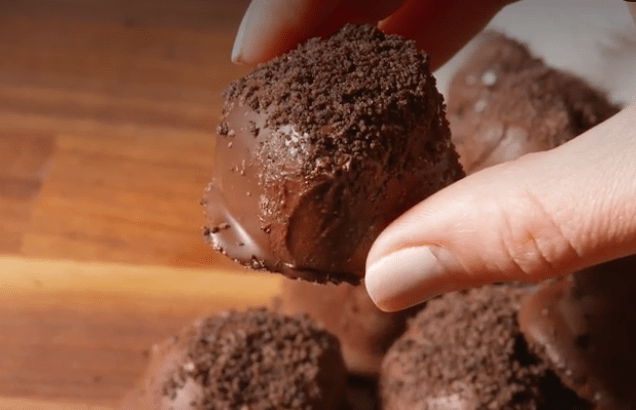
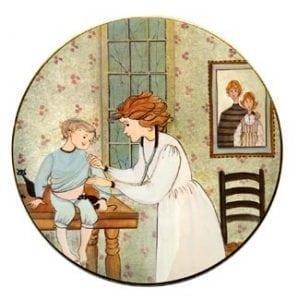
 DIRECTIONS
DIRECTIONS



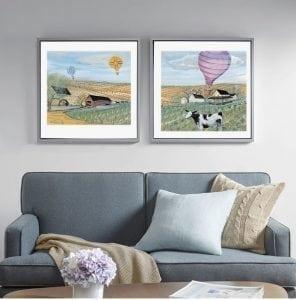
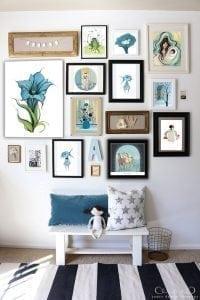
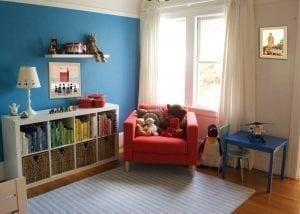
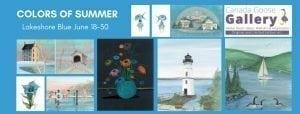


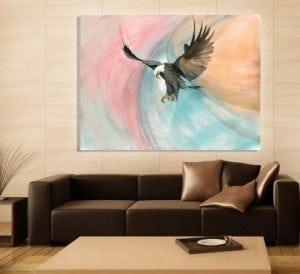
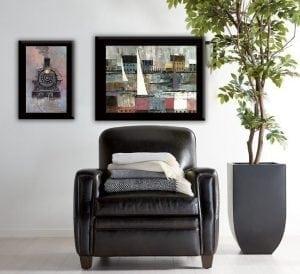
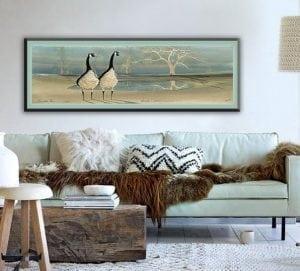
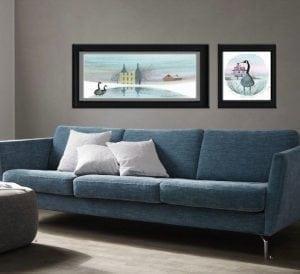


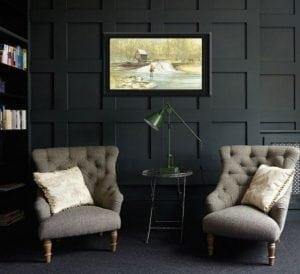

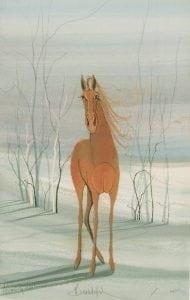
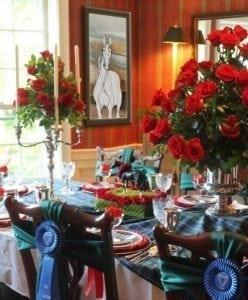
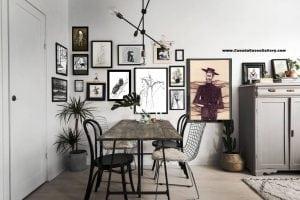
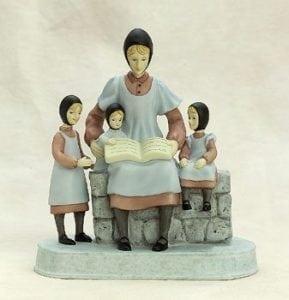






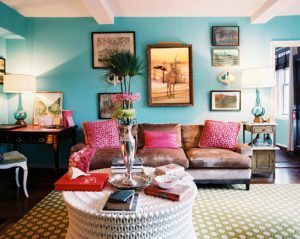

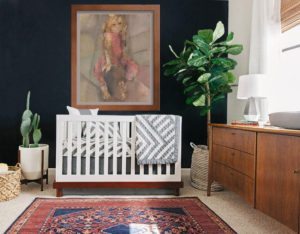

 Canada Goose Gallery offers a mix of etchings, offset lithographs, original art and giclee limited edition reproductions that are of the highest quality and value, made in America exclusively by the artist's family. We have artist signed pieces and numbered limited editions that will not only refresh your spaces, but also bring value to the art you purchase at all price levels for every shopper's tastes and budgets. And, every piece we deliver to you will include a certificate of authenticity that can be placed on the back after framing ensuring that you have chosen a special and valuable piece of art to inspire your home or office.
Canada Goose Gallery offers a mix of etchings, offset lithographs, original art and giclee limited edition reproductions that are of the highest quality and value, made in America exclusively by the artist's family. We have artist signed pieces and numbered limited editions that will not only refresh your spaces, but also bring value to the art you purchase at all price levels for every shopper's tastes and budgets. And, every piece we deliver to you will include a certificate of authenticity that can be placed on the back after framing ensuring that you have chosen a special and valuable piece of art to inspire your home or office. 